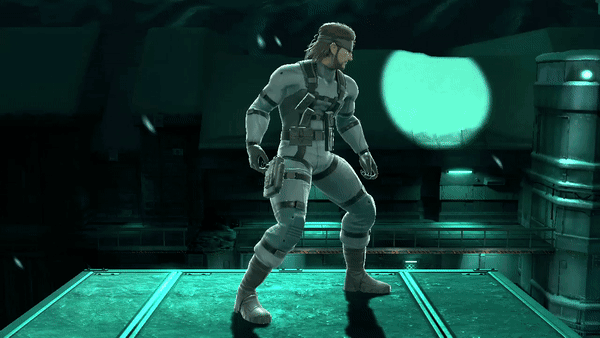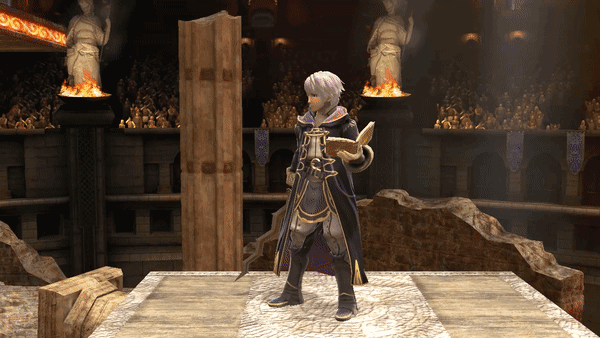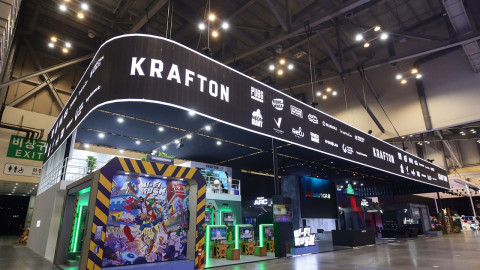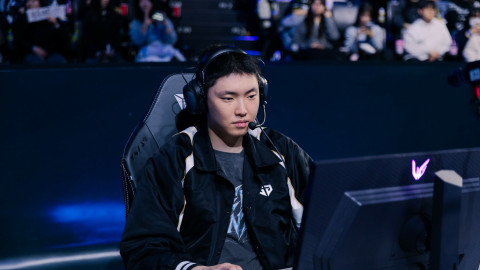
Smash Ultimate likely has the single worst netcode and matchmaking systems of any ААА title. Online play changes the game to the point that the tier list changes drastically online and several top players refuse to compete with their mains or to enter tournaments at all. Yet, competitive Ultimate hasn’t slowed down. If anything, it’s gone farther than many scenes with better netplay.
The reason: WiFi warriors. Smash has long had a robust online scene despite little to no developer support, going as far back as the Brawl days where the All Is Brawl website ran its own competitive online ladder ranking. These WiFi Warriors matter a lot to Smash, too. The laggy hellscape of online Smash birthed many top competitors who only got better when they stepped up to the set up.
Saleem "Salem" Akiel Young, Samuel "Dabuz" Buzby, and Enrique "Maister" Hernández Solís were all WiFi Warriors once (and Maister never stopped being one). Run the netcode on a NASA server from the 1980’s, run the game on a used Lite-Brite, Smashers will still squeeze their online matches for every ounce of competitive growth and viability. So it goes in the brave new world of Ultimate, which somehow has the same old internet problems of Brawl.
In honor of the intrepid souls that endure countless buffered air dodge SDs, I’ve picked four WiFi warriors you should watch. These are players who may have had some regional success before COVID but have really taken off since. They’re also players that I think could do serious damage when offline comes back. Most of all, they’re just worth watching.

1. KirbyKid (K. Rool)
One thing you have to accept about online play is the heavy. The heavy gets mostly buffed by the way added latency changes the game because their advantage state remains the same, if not better. Meanwhile, the fast, combo-heavy characters that counter them get nerfed.
The heavy not only thrives due to combos dropping but because more movement mistakes happen, leading to more slip-ups. The heavy not only survives their slip-ups more often, but they also can get much bigger punishes off of an opponent’s slip-ups. Luke “KirbyKid” Richmond became one of the world’s best King K. Rool players because he knows how to punish.
He works K. Rool’s advantage state into something worth fearing. What’s really striking is how he uses fear to extend the advantage. It’s a particularly effective style for heavies, because every fighting game player fears the heavy somewhat, and it’s even better for K. Rool because the thousands of cheesy WiFi K. Rools condition certain fearful instincts that KirbyKid can then exploit.
The quickest example comes in KirbyKid’s big upset win against Edgar "Sparg0" Valdez, a quickly rising star pre-COVID and one of the best online players. Here, KirbyKid got two crucial kills by mixing up a common K. Rool ledge tactic.
The first layer of yomi here is that K. Rool stands on the platform holding his blunderbuss in order to bait a roll or normal get up. Then, the K. Rool usually slides off, sucks the opponent up, and either kills them or throws them back off stage. Most players know this layer by now, so they beat it out by adding their own layer: simply waiting out the slide-off, then jumping. KirbyKid adds yet another layer by baiting out the wait and jump, then punishing.
KirbyKid also understands how to punish panic options really well, which is vital because most players will panic when K. Rool puts them in disadvantage. If you watch a highlight reel, you can see this most in his edgeguards, where he often lands double spikes. He gets these so often because the low, mid, and sometimes even high-level players in these clips will be so worried after the first spike that they’ll immediately try to recover, making for a predictable, punishable pattern.
Against tougher opponents, like top regional player Arturo "Joker" Ochoa, KirbyKid gets more creative. In the clip above, he gets a great string on Joker, then reads that Joker will try to neutral air dodge to avoid taking another huge hit. So he uses his blunderbuss to catch the air dodge and extend advantage, getting a cool 100% off of his advantage state.
Earlier, (about 3:05) he reads to Joker’s ledge roll and pivot-grabs to get a kill. KirbyKid knows that anyone facing K. Rool just wants to put the game back in neutral, where they can win with faster moves and better tools. He reads and reacts to that desire very well.
KirbyKid could well pull off some surprises when online returns, given how good his advantage state is. After all, he was already ranked 4th on Louisiana’s offline power rankings. The problem for him will be surviving disadvantage. KirbyKid works well in scramble situations, where he often knows the option to catch opponents off guard. See his very sharp turnaround up tilt below.
But K. Rool’s disadvantage is flat-out much worse offline, where opponents can consistently land tight combos and confirms as well as abuse the heavy’s terrible defensive frame data. You can see how much these combos matter in his first-to-10 with Falcon player Griffin "Fatality" Miller, which was played on the less laggy Yuzu netplay. Still, it’s worth keeping an eye out for this croc.

2. AlanDiss (Snake)
What makes AlanDiss so cool is that he plays Snake.
That’s a rare sentence to read but AlanDiss plays such different kind of Snake. His main strength on the character isn’t pure trapping — what the character’s designed for — but the combos and follow-ups he gets off of most hits. Alan is one of the most highly optimized Snake players I’ve seen predominantly due to hit confirms.
Alan has an exceptional understanding of how to follow-up on most of the hits from his explosives. He uses Snake’s fast aerials and large hitboxes, as well as a bit of Nikita, to create unorthodox combos that you usually won’t see. It gives his Snake a more aggressive and dynamic feel than what you’d normally expect.
It also provides more highlights and openings than is easy to actually capture. I put a favorite of mine above, where he shoots a Nikita diagonally above, baiting Jejajeja to run in where Alan then dash attacks him into Nikita. In the clip below, you can see him claw back stage control with a grenade to back air, then take the stock with a clever grenade to up smash.
These simple two-hit grenade combos are effective for their stage control more so than for their damage. Alan uses them to open up space in neutral and corner his opponents so that he can steal away the momentum.
At times, AlanDiss’s style can be too aggressive and when an opponent knows how to simply outbox him, he can struggle. His set against KirbyKid shows him struggling hard when the other player has a beat on his landing and counterattack patterns. Other times he simply gets lost in the sauce. He runs such a chaotic style that he loses neutral interactions and sometimes entire games because he loses track of his own explosives.
All the same, AlanDiss only seems to be getting better. What’s more, his style should translate pretty well in offline. He can play a campy game like any Snake but his focus on follow-ups, tech chases, and bewilderingly fast movement should all suit offline play.

3. Angel (Robin)
In some ways, Angel “Angel” Nunez is to Robin what AlanDiss is to Snake. Like Alan, Angel excels at following up on his projectiles. One of his most famous plays features him chaining together 3 arcfires into an up smash to steal Salem’s second stock right out from under him.
But if anything, the arcfires are the more common parts of Angel’s kit. While Angel does them well, they’re core to most great Robin players. Angel’s use of thunder is all the more impressive and unique.
Angel has a very good idea for when and how to use each version of thunder. In particular, he uses arcthunder very well to generate shield pressure and create ledge kills. He gets two kills in the set above against Salem at about 1:24 and 10:25 with a arcthunder-levin sword fair shield poke set up.
He uses a similar set up to get a shield break on BestNess. The stylish way that he seals the kill speaks a lot to Angel’s identity as a player. He’s mechanical, knows the limits of his character well, and seems intent on making one of the game’s slowest zoners look cool.
Robin’s very low-speed stats are a big part of why the character doesn’t escape mid-tier on msot tier lists. Angel gets around this weakness mostly through polished micro-movement. Robin might not be able to clear ground but once in the air, Robin can use wavebouncing to fine-tune their movement. In the timestamp below, Angel uses a fast wavebounce thunder into dash attack to completely reverse the pressure Kiyarash had on him.
If you’re looking for a set to sum up Angel’s play, the one against Kiyarash works well. The whole thing is full of shield pressure, micromovement, and really sharp confirms off specials. At just about 8 minutes in, you can catch a sequence that has all 3 - a smart string of safe hits on shield - into a thunder charge to hold aerial momentum - into a thunder-to-nair confirm.
Offline, Robin’s biggest problem isn’t that projectiles get harder to deal with. It’s more that traditional Robin counters - like the star fox and the thunder rats - become more common. Robin also feasts on the plodding heavies that can typically dominate an WiFi bracket.

4. Sharp
If there’s any character that isn't fit for online play, it’s Sheik. Super light, low kill pressure, full of frame-tight combos, Sheik demands a precision which online play regularly refuses. Maybe that’s why Noah “Sharp” McCulley plays half the cast online.
Or maybe the Rhode Island Sheik player simply understands that the spirit of online Ultimate lies in screwing around with random secondaries. It’s hard to say, but it’s pretty clear that Sharp’s one of the best players in the online era when he’s on some mixture of Sheik, Joker, Wolf, and Zero Suit Samus (ZSS).
Sharp’s large roster is also a part of why he does so well online. In the online meta, character knowledge is more vital than ever because cheesy strategies became more potent. This is because reaction-based defense is much more touch and go. If you try to dodge or shield on reaction, there’s a chance the netcode holds your input for just long enough that you get hit and killed where offline you might’ve dodged.
https://www.youtube.com/watch?v=uhUNxx-P9SE
In turn, online Ultimate sees a rise of lesser-known characters that have more of these strategies. Maybe because he plays so many characters, maybe because of good fundamentals, Sharp is a tough player to cheese.
His match against Rickles is raw brutality because of it. There is no off stage mix-up that can stop Rickles from dying at 60-70 percent and Sharp just seems to know every haymaker Ganon wants to throw.
https://www.youtube.com/watch?v=cQ9Veso_J_A&
In another set against KirbyKid, Sharp has several different solutions to K. Rool’s blunderbuss ledge traps worked out so that he doesn’t drop stocks like Sparg0 did. He also shows macro-game strengths that really help for online play.
Sharp seems to work best when on characters that fit his skill at the macro game and have flexible kits that let him play at different paces. If those characters have elusive movement as well, then then he really excels — hence Sheik, Joker, Wolf.
[https://www.youtube.com/watch?v=2oDT8Ot3vSs ]
At times, Sharp can take risks and extensions that may be even more punishable offline but overall he sits at the top of the WiFi ladder despite often messing around on secondaries. Given he travels, he’s one of the WiFi warriors most likely to make the official rankings when offline returns. He’s also one of the most worth watching right now because you never really know what you’ll get, but usually it’s something good.
Sort by:
Comments :0






